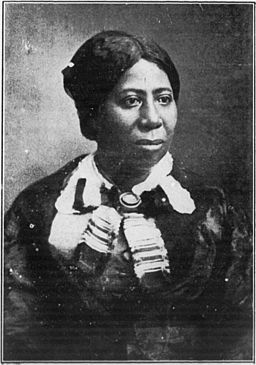An introduction to the life of Frederick Douglass
In honor of Black History Month in the US and Canada, we’ve put together an introduction to Frederick Douglass. Known for his work as an abolitionist and women’s rights supporter, Douglass remains one of American History’s most influential figures.
But who was Frederick Douglass? Read below to find out.
He was born into slavery.
Born in 1818, Douglass was separated from his mother Harriet Bailey at birth, although she would visit him at night when she could. Douglass lived with his maternal grandmother until the age of seven, when he moved to the Wye House plantation run by Aaron Anthony, whom Douglass suspected could be his father. When Anthony died, Douglass was sent to Hugh and Sophia Auld in Baltimore.
Sophia Auld began Douglass’s initial education, teaching him the alphabet. Her husband Hugh discouraged this relationship, believing that education and slavery were incompatible. Douglass, however, continued to teach himself to read, later writing: “The very decided manner with which he spoke, and strove to impress his wife with the evil consequences of giving me instruction, served to convince me that he was deeply sensible of the truths he was uttering.”
 Anna Murray, married to Frederick Douglass for 44 years. “Photograph of Anna Murray Douglass” first published in Rosetta Douglass Sprague, “My Mother As I Recall Her”, 1900. Public domain via Wikimedia Commons.
Anna Murray, married to Frederick Douglass for 44 years. “Photograph of Anna Murray Douglass” first published in Rosetta Douglass Sprague, “My Mother As I Recall Her”, 1900. Public domain via Wikimedia Commons.He escaped from slavery with the help of his first wife
Douglass successfully escaped slavery by boarding a train to Maryland in 1838. Anna Murray, a free black woman whom Douglass had met the previous year, assisted Douglass by providing him with part of her savings to cover his travel costs. She also gave him a sailor’s uniform she obtained from her work as a laundress, which Douglass wore as he journeyed through Delaware. Douglass travelled by steamboat to the free state of Pennsylvania, and continued on to a safe house in New York City. His entire trip took him only 24 hours. Once he arrived at the safe house, Douglass sent for Murray to meet him in New York. They were married eleven days later, on 15 September 1838.
He was an abolitionist.
In 1845, Douglass began printing The North Star, a weekly anti-slavery newspaper named in reference to runaway slaves, who were taught to follow the North Star. As he became more involved in the abolitionist movement, Douglass continued to believe in nonviolent means of resistance and the importance of education. The Massachusetts Anti-Slavery Society hired Douglass as a speaker, and he toured and lectured on his experiences as a slave. During the years leading up to the Civil War, Douglass became one of the most renowned speakers on abolition in the country.
He supported women’s rights.
Douglass was the only African American to attend the Seneca Falls Convention in 1848. While there, suffragist Elizabeth Cady Stanton proposed a motion to pass a resolution asking for women’s suffrage, which many of the attending assembly members rejected. Douglass spoke in favor of Stanton’s resolution, stating the importance of women’s involvement in politics. After his speech, the attendees voted to pass the resolution.
Douglass and Stanton later had a falling out over the Fifteenth Amendment, which declared that the right to vote could no longer be denied on account of race, color, or previous condition of servitude. Stanton feared that the amendment would cause the women’s movement to lose support, but Douglass recognized that attaching women’s suffrage to the rights of black men would likely cause the amendment to fail. Despite his support for the Fifteenth Amendment, however, Douglass remained a supporter of women’s rights.
He captured his life in Narrative of the Life of Frederick Douglass, An American Slave.
In 1845, Douglass published Narrative of the Life of Frederick Douglass, a memoir that portrayed his life as a slave and his journey to becoming a free man. Its publication heavily influenced the abolitionist movement.
Featured image credit: “Front page of The North Star newspaper, Rochester, New York” via Library of Congress. Public Domain via Wikimedia Commons.
The post An introduction to the life of Frederick Douglass appeared first on OUPblog.

Oxford University Press's Blog
- Oxford University Press's profile
- 238 followers



